You might be familiar with the process of improving Search Engine Optimization (SEO), to drive more traffic to your website.
While traditional SEO practices remain important for driving traffic to websites, search engines also focus on factors beyond just keywords and backlinks. Search engines continually evolve to enhance user experience and engagement.
If you aim to claim the top position in search results, it’s essential to grasp the intricacies of the process.
In this blog post, you’ll have all the knowledge of SERP. By the end, you’ll gain a comprehensive understanding of the Google SERP features at play in 2024.
What is SERP?
Search Engine Results Page (SERP) is the outcome displayed after a user inputs a query into a search engine like Google, Bing, or Yahoo. The importance of SERP for a website is that it allows indexing, which refers to the process by which search engines discover and include web pages in their databases so that they can be displayed in response to user queries.

Upon searching with a relevant keyword, SERP typically exhibits a compilation of relevant websites alongside additional elements, including paid advertisements, knowledge panels, images, videos, featured snippets, and more.
The Importance of SERP
By now, you’re likely aware that basic SEO practices alone are insufficient for achieving high rankings in the SERPs. Below, we’ll outline the importance of SERP and how understanding it can help improve your website’s rankings.
1. Traffic Generation
SERPs are instrumental in generating traffic for your website, particularly when your site ranks at the top of search results. Websites that secure higher positions on SERPs typically experience increased organic traffic, as users are more inclined to click on top-ranking links.
2. Importance of SERP in web page visibility
Importance of SERP in web page visibility cannot be overstated. SERP determines the visibility of website pages in search results by crawling and indexing the web pages. Further ranking them based on various factors such as relevance, quality, and user experience as well. Pages that rank higher in SERPs are more likely to receive organic traffic and attract potential visitors.
3. User Experience
SERP features various elements such as snippets, knowledge panels, images, videos, and more, aiming to provide users with relevant and diverse information directly on the search results page. Optimizing for SERP features can improve user experience and increase the chances of attracting clicks.
4. Insights and Analytics
SERPs provide valuable analytics by analyzing performance metrics such as click-through rates, impressions, and changes in position. These insights offer valuable information about user behavior and the efficacy of SEO strategies, helping website owners understand how their pages are performing and where improvements can be made.
Types of Result in SERPs
A SERP typically presents two main types of results: organic results and paid results (often displayed as advertisements). Incorporating both methods to increase the traffic to your website is very crucial.
Organic Results in SERPs
Organic search results in SERPs are influenced by on-page optimization efforts, which involve tailoring webpage content to match relevant keywords and user queries. These are the results that appear naturally based on the factors such as relevance, quality, authority, and more. There are many way that you can increase your organic traffic on WordPress.
The keyword intent in the SERPs also influences the ranking of the websites. Generally, there are three types of keyword intents:
- Informational (I): When users search for specific keywords to learn about a product or topic, those keywords are typically intended for informational purposes. For example, someone searching for “how to tie a tie” is likely seeking a tutorial video or blog post to learn the skill, without necessarily intending to purchase a tie immediately.
- Navigational (N): Navigational intent refers to when users already have a clear idea of what they want and are actively seeking out a specific brand or product. This type of keyword search indicates that individuals are familiar with the brand or product they’re looking for and are directly navigating to it.
- Transactional (T): Transactional intent relates to search engine result pages (SERPs) where users are prepared to make a purchase of their desired products. This indicates that individuals have progressed through the information-gathering and decision-making stages and are now ready to complete a transaction.
Paid Results in SERPs
Paid results in search engine result pages (SERPs) enable businesses to pay a certain amount to have their advertisements prominently displayed at the top or alongside organic search results. While paid ads can indeed increase visibility and drive traffic to a website, it’s essential to recognize that they’re not the sole method for achieving this goal.
Paid search results typically operate under the pay-per-click (PPC) and cost-per-mille (CPM) models:
- Pay Per Click (PPC): Advertisers pay for each click on their ads. This method directly attracts website traffic because charges occur only when users click on the ad. PPC campaigns are usually handled through platforms like Google Ads (formerly Google AdWords), Bing Ads, and similar services.
- Cost Per Mille (CPM): In this model, advertisers pay a fee for every one thousand impressions of their advertisement. Regardless of how many clicks or interactions the ad receives the advertisers pay a fixed rate for their ads to be displayed a thousand times.
What are SERP features?
Apart from the basic organic and paid search results, SERPs encompass a diverse array of additional search elements. The other features that SERPs often include other features, such as video infographics, links to popular products, etc.
Here we will cover some of the most common that appear in the Google SERPs:
Featured Snippets
The featured snippets display a concise summary at the top of search results which is extracted from relevant web pages.
Top Stories
Top stories in Google search engines typically refer to news articles or topics that are currently trending or gaining significant interest among users. These stories are often determined based on factors such as the volume of searches, user engagement metrics, and relevance to current events. Therefore, they represent the most popular or noteworthy news items at a given time.

Knowledge Card
A knowledge card resembles a condensed Wikipedia page, appearing as a featured box on the SERP. It provides factual information about the searched topic. Google sources these facts from a vast database containing over 3.5 billion data points, pulling information from various reputable sources.
For example, when you search “dollar to euro,” you’ll see a knowledge card showing the answer:
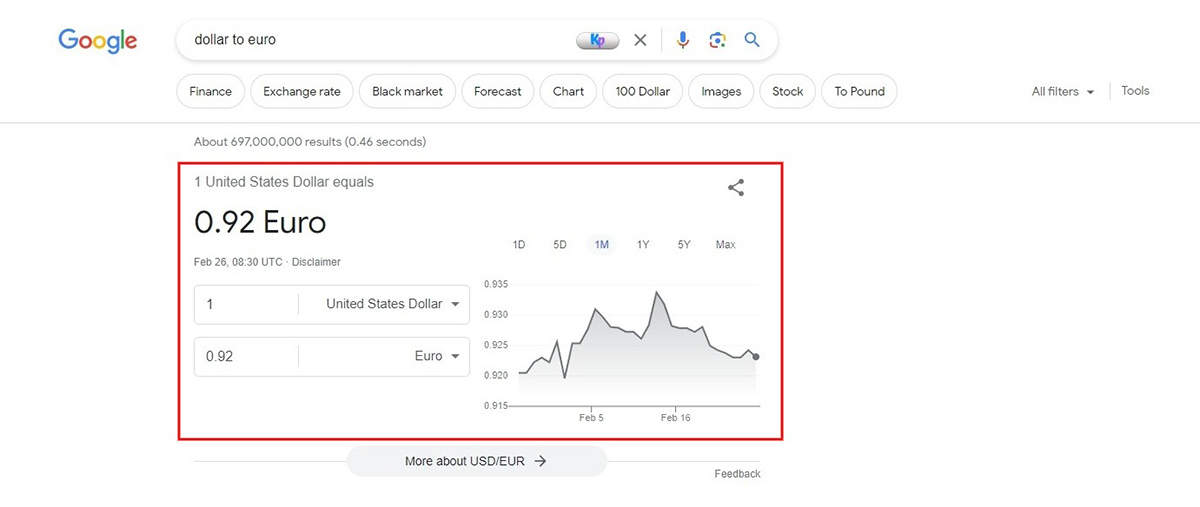
As this information is sourced solely from Google-owned and reputable third-party providers, it becomes challenging to secure rankings for these positions.
Knowledge Panel
The knowledge panel is similar to the knowledge card, except it collects information from the Google Maps or My Business Listings. For this reason, a knowledge panel usually shows information about businesses, brands, or organizations.
A knowledge panel typically appears near the top and on the right-hand side of the search results when using a mobile device. These panels often contain various details, such as facts, information, images, social media links, related searches, and more. The image below illustrates the knowledge card for Facebook.
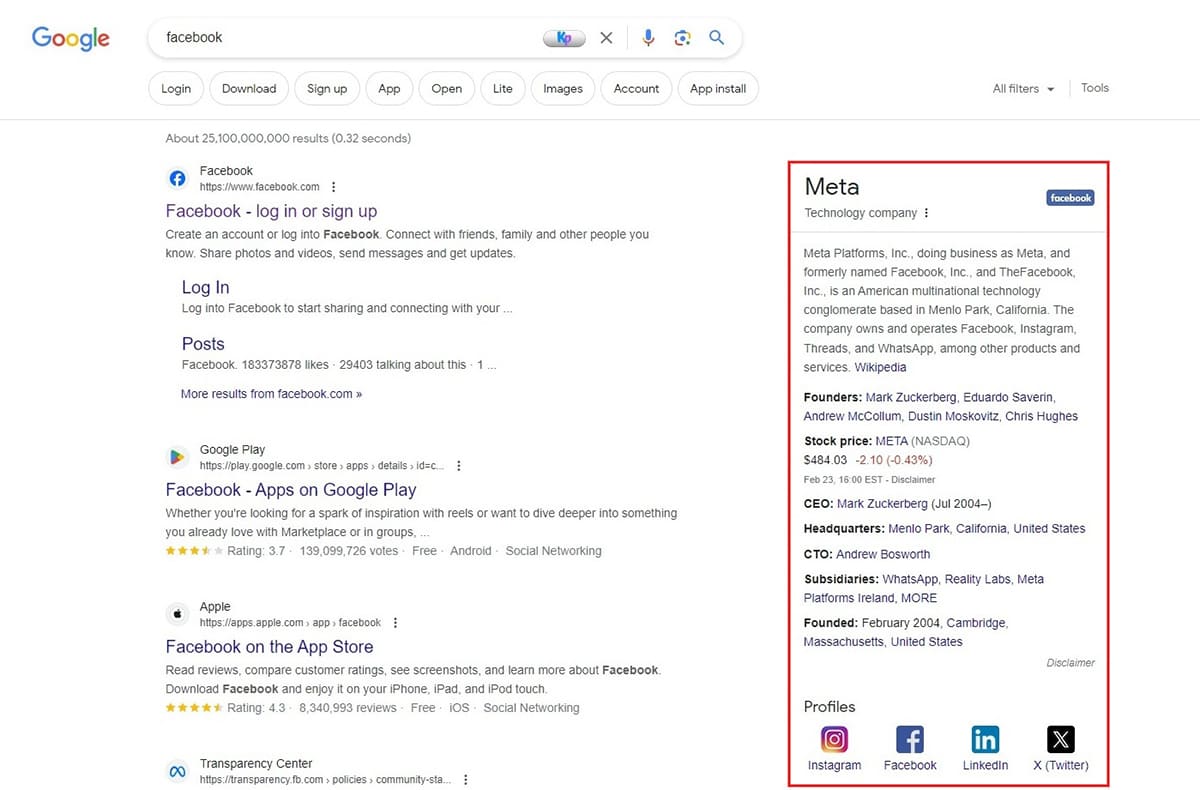
While you can not directly add content on the knowledge panel, there are some ways you can improve the suggestion of the content. Here’s how:
- Google My Business can increase the chances of your business information appearing in knowledge panels and local search results. So, if you are a business owner make sure that your listing is complete, accurate, and up to date with the relevant details such as business hours, address, contact information, and categories.
- Google uses information from official social media platforms. Firstly, make sure that your social media profiles are verified, up to date, and contain accurate information about yourself and your business.
- A structured data markup implementation on your website can provide search engines with additional context about your content. While it doesn’t add your content to knowledge panels, it may increase the likelihood of your content being featured in rich snippets and other search features. This may indirectly contribute to knowledge panel information.
Image Pack
This feature, often seen in search engine results pages (SERPs), is crucial for emphasizing the importance of visual content. It ensures that users get clear pictures related to their search queries, making search results more helpful and engaging.
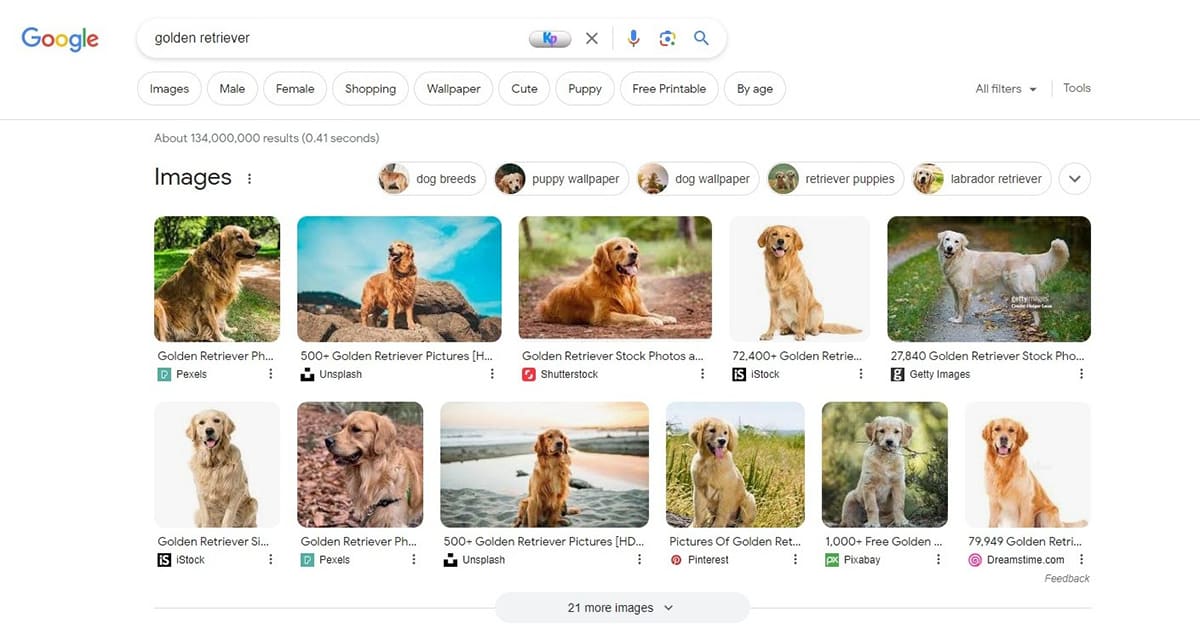
A different algorithm is used in images in comparison to text. It will be better if you practice the following which will help your image to rank better in the search results:
- Proper alt text and image captions
- Ensuring a readable page URL
- Crafting an accurate and engaging page title
- Utilizing rectangular photos of moderate size and dimensions
Videos
In many instances, when users conduct a search, they’ll encounter a horizontal lineup of videos closely tied to their query right at the top of the search results page. This convenient feature provides quick access to relevant video content, offering users a visual and dynamic alternative to text-based results.

Site Links
The site links feature in Google search engine result pages (SERPs) presents additional links beneath the main search result for a website. These links facilitate direct navigation to specific pages within the site, enhancing user accessibility and efficiency in finding desired content.
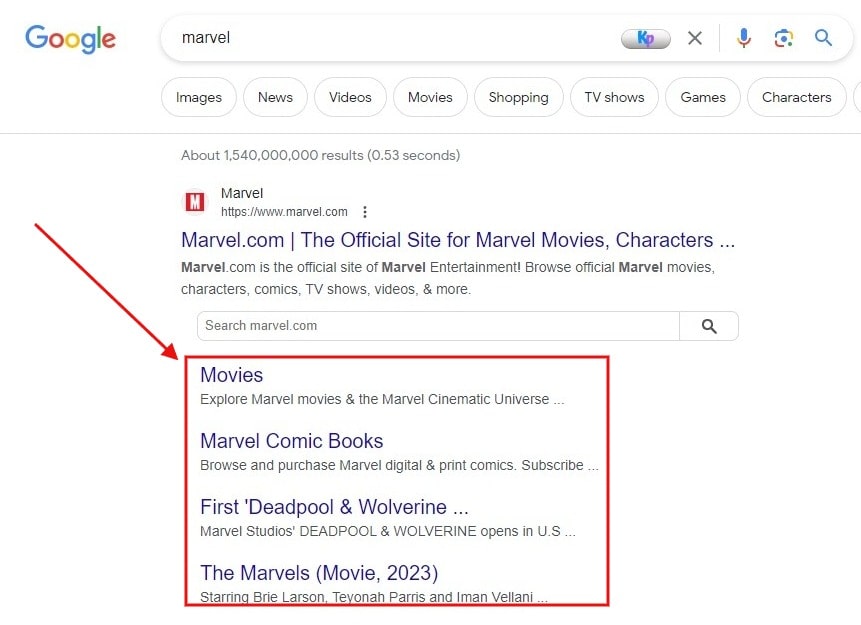
Site links are automatically generated by Google’s algorithms based on the relevance and popularity of different pages within the website.
Related Questions
The People Also Ask section, commonly seen on search engine results pages (SERPs), dynamically presents questions based on what other users are searching for. These questions offer insights into related topics that you might be interested in exploring further. Each question expands to reveal an answer sourced from a webpage, similar to how Featured Snippets are displayed.
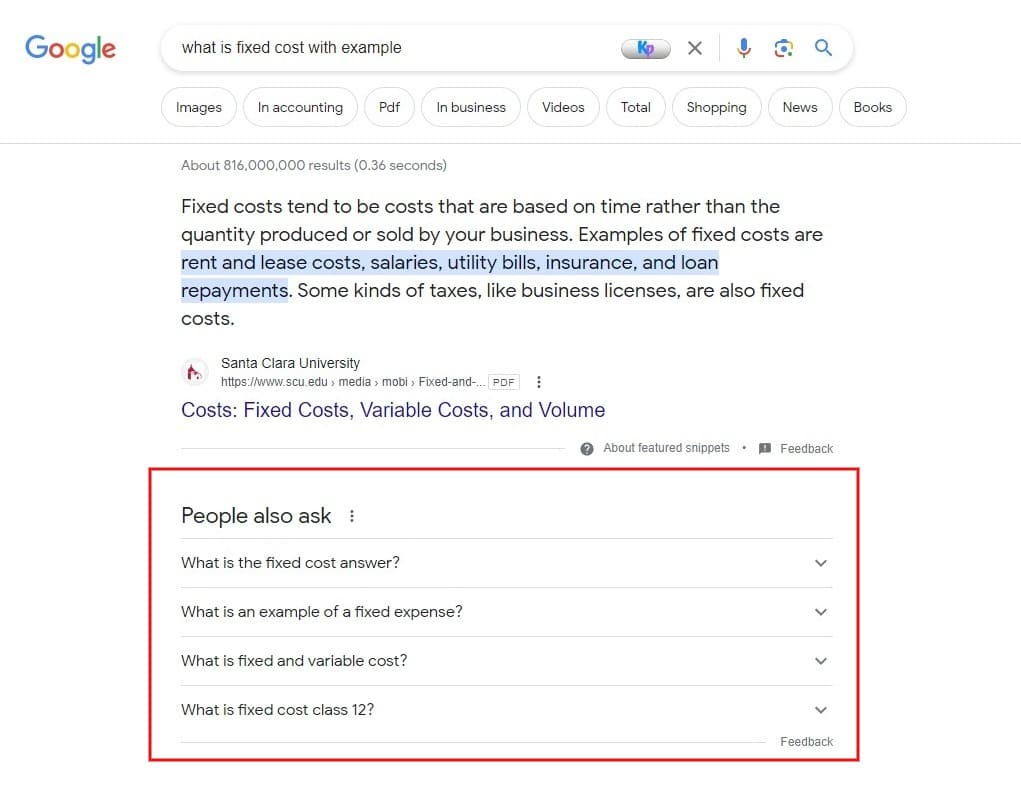
Local Packs
Local packs are triggered when a search includes a specific location or when Google detects nearby availability of the queried item. This feature displays a map pinpointing relevant businesses or brands, with accompanying listings below containing names, contact details, and ratings for these establishments.
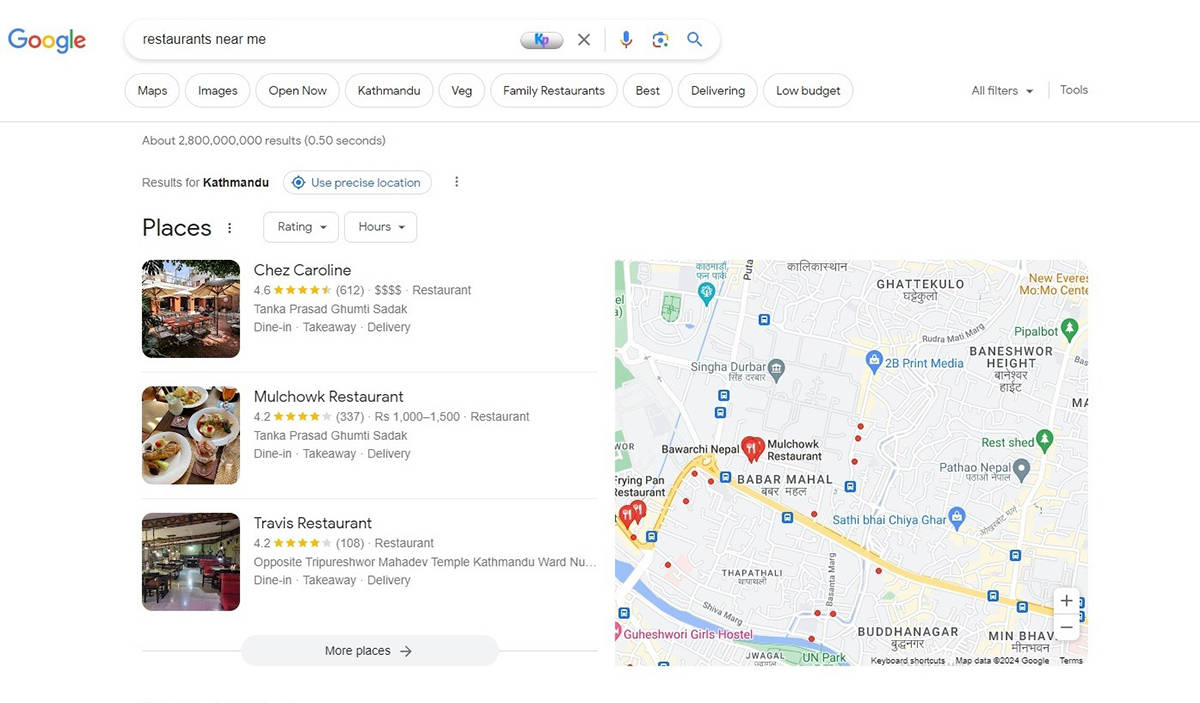
How do SERPs affect SEO?
SERPs serve as a battleground where businesses compete for visibility and user clicks, akin to selecting a prime physical location for a brick-and-mortar store. Effective SEO strategies give businesses an edge in this competitive arena, attracting more traffic to their websites.
SERPs are like bustling marketplaces where businesses compete for attention, much like storefronts in a busy street. Effective SEO strategies act as prime real estate, giving businesses an advantage in attracting visitors to their websites. Optimizing elements such as titles and meta descriptions helps improve click-through rates, ensuring users choose your link over others. Using clear and memorable URLs strengthens brand recognition, making it easier for users to identify and trust your website. Additionally, registering on Google My Business enhances visibility, especially for local searches, by providing essential business details for potential customers to find easily.
Conclusion
In conclusion, understanding the importance of SERPs is crucial for driving traffic to your website. SERPs act as the main stage where businesses compete for attention and clicks from users. By using effective SEO strategies, businesses can secure a prominent position in these search results, attracting more visitors to their websites. Optimizing simple elements like titles, descriptions, and URLs can significantly improve visibility and brand recognition. Features like knowledge panels and local packs further enhance a business’s presence in search results. Therefore, grasping the basics of SERPs and tailoring SEO efforts accordingly is vital for businesses aiming to succeed online.

